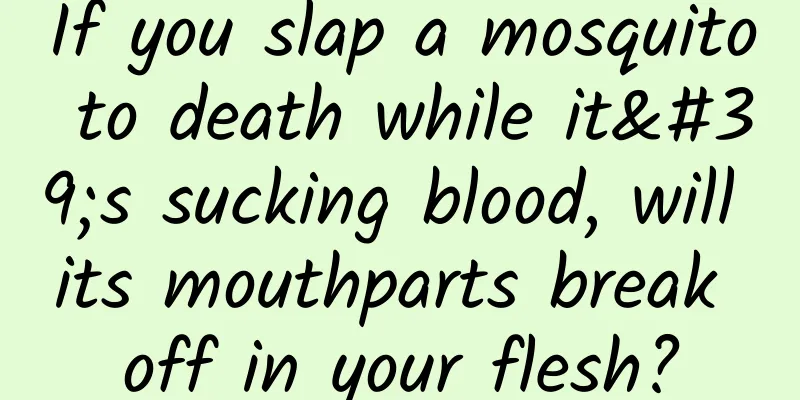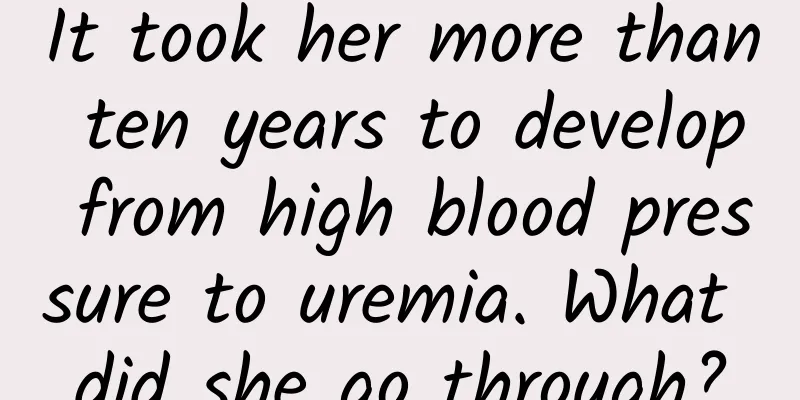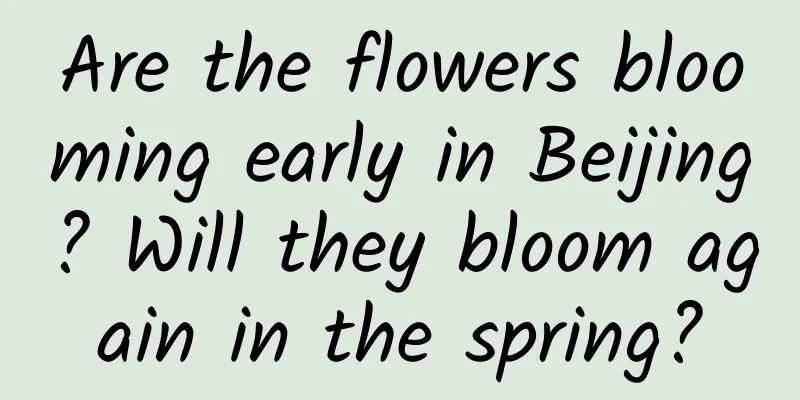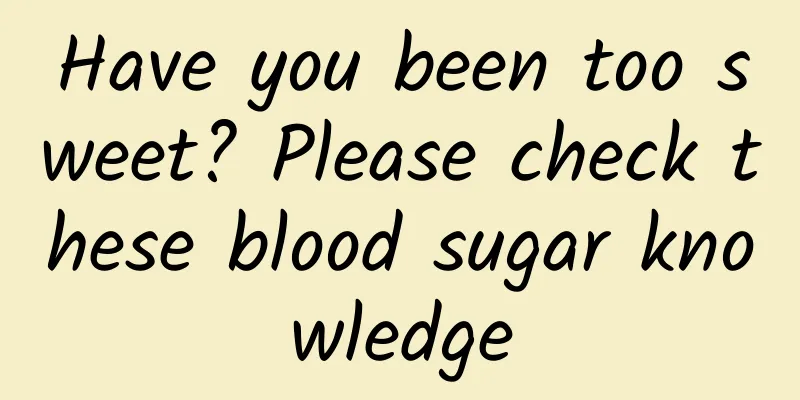Dunhuang murals have become "like crispy dough". How can restorers save this world treasure?
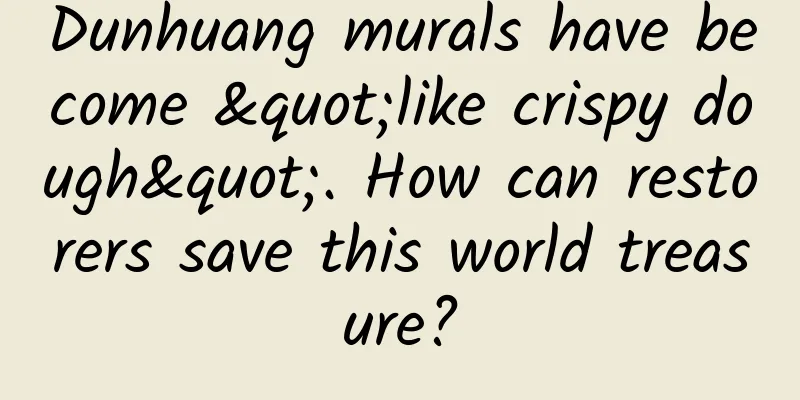
|
The topic of "How difficult is it to protect the Dunhuang murals" has become a hot topic. What are the difficulties in restoring the murals? What concepts and methods are currently used to restore them? Compiled by New Media Editor Duan Dawei Recently, the topic #How difficult is it to protect Dunhuang murals# has become a hot search on Weibo. Fan Jinshi, honorary director of the Dunhuang Research Institute, said, "Dunhuang murals are 'old and sick', and the pigment layers may be lifted up piece by piece, gradually become soft 'like a dough', and even fall off when the door is opened loudly." These situations are enough to show the difficulty and importance of the current mural restoration work. (Image source: Screenshot from Sina Weibo) British historian Toynbee said that "the 21st century is the century of the Chinese", mainly referring to Chinese culture, especially Confucianism and Mahayana Buddhism leading mankind out of the fog and suffering. Chinese traditional art has also brought different forms of expression, artistic language and aesthetic realm to human civilization. Ancient mural art is one of the mainstream forms of Chinese painting development. Chinese painting in the modern sense includes traditional Chinese murals and scroll paintings. The two are not only of the same origin, but also go hand in hand and sometimes influence each other. If scroll paintings are the Chinese people's calligraphy and painting achievements on paper, traditional murals are the glittering flowers of art on stone walls. What are the difficulties in restoring murals now? What concepts and methods are used to restore them? ◈ ◈ ◈ Restoration work in a race against time Murals are a shining pearl among the numerous historical and cultural relics of mankind, and are also the most important reference material for modern people to understand ancient social life. Due to various reasons, my country is still very weak in the research and education of traditional murals. Therefore, the research and teaching exploration of traditional murals is of great significance to the development and breakthrough of contemporary Chinese painting and various art categories. If one wants to study cave murals, it is necessary to carry out urgent restoration and protection work on China's cave murals. The heavy task of "patching" China's cave murals falls on the shoulders of mural restorers. At present, the cave murals are facing many problems. For example, the carbon dioxide exhaled by a large number of visitors in the caves will quickly deliquesce the salt and alkali in the murals and accelerate the wall's alkali, peeling and pigment powdering and peeling. This is also an urgent problem to be solved in protecting the cave murals during the tourism boom. Therefore, the restoration of cave murals is a race against time and cannot be sloppy. For example, the Dunhuang murals in the Dunhuang Grottoes, the Mogao Grottoes are located in the harsh environment of desert drought, wind erosion and sandstorms are serious, and the murals in the caves are rapidly deteriorating. Chinese and foreign experts estimate that the entire Dunhuang treasure house will disappear in the next 50 to 100 years, so timely protection is very important. Therefore, the restoration of cave murals requires meticulous adherence to scientific mural restoration techniques, racing against time to "patch" the scars inflicted by time on the murals. ◈ ◈ ◈ It is both technology and art As a special type of cultural relic resource, murals not only contain a lot of historical and scientific value, but are also rare and precious works of art. The restoration of cave murals is very difficult and requires the restorer to have profound artistic attainments, cultural accomplishments, and chemical engineering knowledge. Due to different regions and large differences in stone quality, the structures of caves in various places are slightly different. The production techniques and materials used in statues and paintings are also different. In addition, the ground layer of Chinese cave murals is loose in texture, and the actual attachment layer of the murals is extremely limited, only as thin as an eggshell, which increases the difficulty of the restoration and protection of cave murals. ▲Left: The paint layer of the mural is peeling, right: The paint of the mural is discolored and faded (Photo source: China Academy of Art Press) ▲Left: Mural calcite, right: Mural hollowing and peeling (Photo source: China Academy of Art Press) At present, in the Dunhuang Grottoes, which have the most cave murals, only conservative measures can be taken to treat the murals. The right remedies should be prescribed for the symptoms, and the murals' peeling, acid-base, powdering, hollowing and other diseases should be treated in different categories. In recent decades, restorers have mainly repaired the murals of the Dunhuang Grottoes that have fallen off in large areas and have been flaked. Both types of restoration have achieved relatively good protective effects, effectively controlling the damage and saving a large number of endangered murals. ◈ ◈ ◈ The conservation concept of “minimum intervention” ▲ "Xuanwu Picture" from the tomb of Han Xiu in the Tang Dynasty, collected by Shaanxi History Museum - a successful case of mural restoration that adheres to "authenticity" (Photo source: Shaanxi History Museum) The concept of "minimum intervention" was first widely used in medicine. Cultural relics are similar to patients, and cultural relic restorers are doctors of cultural relics. When treating patients, of course, they must find the cause of the disease and use as little "medicine" as possible to treat the disease, that is, the disease of cultural relics. At this stage, more and more emphasis is placed on the importance of preventive protection, that is, emphasizing the use of control measures to create an environment suitable for the storage of murals as a protective measure, and try not to interfere with the murals themselves. For "endangered murals", rescue protection and restoration should be taken in a timely manner. First of all, this concept is also an extension of the concept of "authenticity", because only by minimally interfering with the mural itself can we truly preserve its most original information. Secondly, the technology and materials we use at this stage are limited by the times and can only represent the current productivity and technological level. With the development of the times, there will definitely be new technologies and new materials that are better and more suitable for murals. Therefore, we cannot intervene all at once, and we must leave sufficient space for future generations to reprocess, that is, the "reprocessable" principle. The difficulty of minimal intervention lies in the “small”, that is, the degree of intervention, because the situation of each mural is different, and the scope and scale of intervention required are also completely different, which also requires comprehensive consideration. ◈ ◈ ◈ Technology helps restore murals There are many similarities between cultural relics protection and medicine. When a patient goes to the hospital for treatment, he often needs to undergo various scientific examinations first, such as blood tests, B-ultrasound, CT, etc., and then formulate a reasonable treatment plan based on the examination results and finally implement it. The same is true for mural protection. Nowadays, there are many commonly used analysis and detection instruments and equipment for murals, including microscopic analysis, high-definition and three-dimensional scanning, colorimetric analysis, hyperspectral analysis and other types of spectral analysis, X-ray flaw detection analysis, polarization analysis, X-ray fluorescence analysis, X-ray diffraction analysis, laser Raman analysis, scanning electron microscopy analysis, energy spectrum analysis, ion chromatography analysis, gas chromatography-mass spectrometry analysis and other instruments and equipment. With the development of science and technology, more and more new technologies from other industries are gradually being applied to mural protection, such as acoustic emission technology, VR/AR technology, GPS/GIS/RS and other information technologies. In addition, in the protection and restoration of murals, the combination of various new technologies and new materials with mural protection and the optimization of traditional mural restoration process materials are the key directions for future development, including the application of new materials such as nanomaterials, biomaterials, and graphene materials in mural restoration; the removal of failed materials on the surface of murals by methods such as gel method and microemulsion method, etc. ▲High-definition scanner (Photo source: Shaanxi History Museum) ▲Laser Raman spectrometer (Photo source: Shaanxi History Museum) ▲Restoring murals under a microscope (Photo source: Shaanxi History Museum) These "black technologies" can solve a large number of problems encountered in the protection of murals: using microscopic means, it is possible to observe information on the surface of the murals that cannot be observed by the naked eye, including draft lines and modification traces, which are an important basis for color complement and full-color work; using spectral instruments, it is possible to see the surface information of the murals within the ultraviolet and infrared bands, such as residual glue on the surface, traces of previous restorations, etc., which are an important basis for surface cleaning work; using X-rays, laser Raman, energy spectrometers and other equipment, it is possible to analyze the pigments and ground composition of the murals; using infrared spectrometers, ion chromatography, and gas chromatography-mass spectrometry equipment, it is possible to analyze the cementing substances and soluble salt components in the mural pigments, which can provide a deeper understanding of the ancient mural production process; the analysis results of these scientific instruments are an indispensable part of the mural protection process and provide support for subsequent restorations. Over thousands of years, the lives of the ancients have been transformed into art on the walls. Facing these pieces of art, we should appreciate them with awe and pass them on to the world while protecting them. |||| (Reference materials: Beijing News, WeChat public account of "China Academy of Art Press", Shaanxi History Museum, People's Daily, CCTV News, Xinhuanet, etc.) Produced by: Science Central Kitchen Produced by: Beijing Science and Technology News | Beijing Science and Technology Media Welcome to share to your circle of friends Reproduction without authorization is prohibited |
<<: What happens to foreign objects that accidentally enter the body?
>>: A man's action caused more than 30 cars to burn! Be careful recently
Recommend
How do you pronounce these common bronze wares, such as yan, fu, jia, yi, hu, lei, you?
Bronze ware is the witness and carrier of the ori...
Has the new media dividend passed? You don’t know how to spread content!
We often say that the bonus period of WeChat new ...
Uncover the technical features of mini program development through programming mode
Since the birth of mini programs, many people hav...
Ningxia College Entrance Examination Score Line 2020 [First and Second Score Line Released] 2020 Ningxia College Entrance Examination Score Line List
Ningxia College Entrance Examination Score Line 2...
A famous musician passed away due to suspected cancer. How to detect these 10 common cancers in advance? Check yourself now!
According to Japanese media reports, the famous J...
AppCan receives RMB 100 million in Series B funding and announces open source mobile engine
Recently, AppCan, the advocate and leader of hybr...
Thyroid cancer is becoming more and more common. What should you eat after surgery?
The thyroid gland is the largest endocrine organ ...
DOU+ advertising and buying tips!
The biggest charm of Dou+ is to leverage natural ...
Dongfeng is not in debt. Has the window of opportunity for OLED TV explosion arrived?
It is said in "The Art of War" that &qu...
2 key points to analyze the secrets of Heytea's growth
Competition in the new beverage market is fierce,...
The "elegant" dinosaur with a long neck is the "last survivor" spanning two eras
Editor's note: In the long history of life on...
The first 10,000-meter deep earth scientific exploration well in my country has been drilled
Xinhua News Agency, Urumqi, May 30 (Reporters Li ...
Why is the Earth a sphere? Not all celestial bodies are spheres!
Since ancient times, there have been countless di...
Online event promotion: Grasp these 5 points to increase user engagement
A popular online event can not only directly brin...
Yoshinoya was exposed for using smelly minced meat and expired ingredients. What are the dangers of eating them frequently?
Recently, a piece of news attracted the attention...


